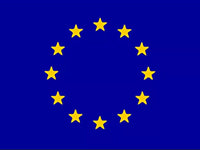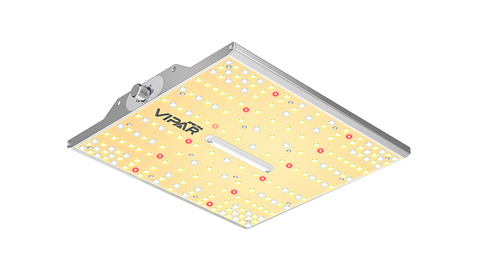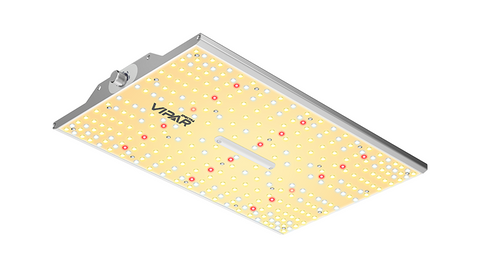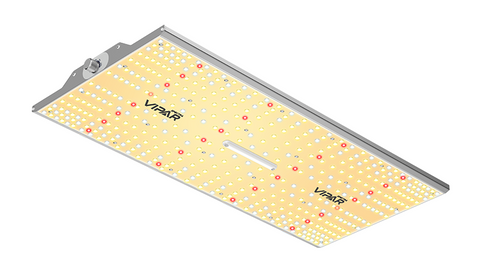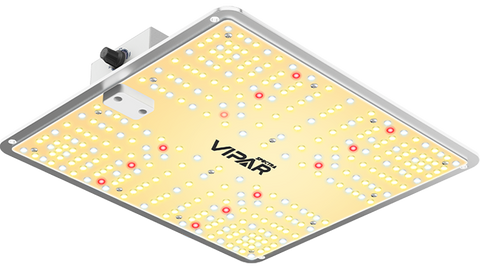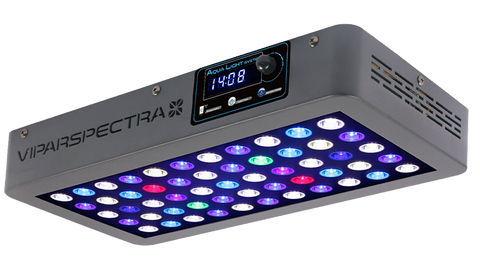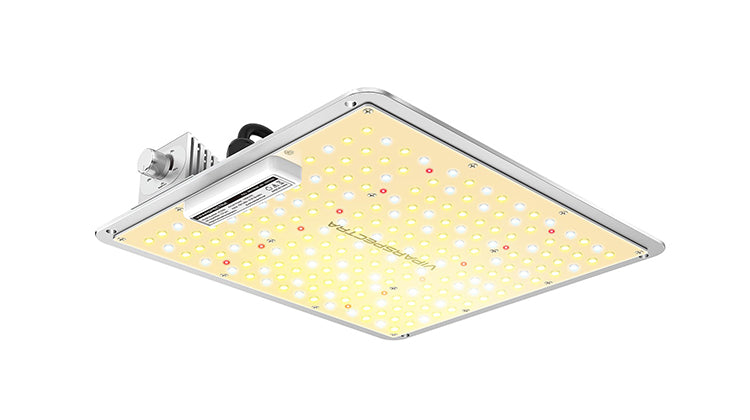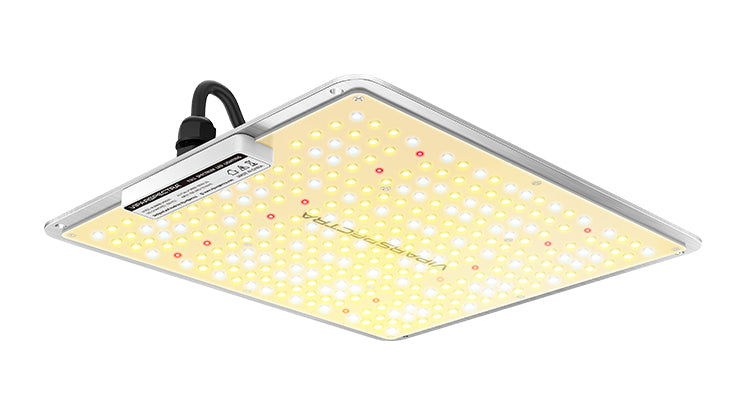Light is a necessary condition for green plants to grow normally. Like humans get energy from food, plants get energy from light through a process called photosynthesis. But in real growing actions, we may find many problems: How does light affect plant growth? What kind of lights do plants need in different growing stages? How to keep light shining properly, not too much or too little? Keep reading and find out answers to the above questions. You'll get a better understanding of how light affects plant growth.
Light Density Affecting Plant Growth
According to botany theory, a certain intensity of light stimulation can produce effective photosynthesis in plants. Appropriate light intensity can promote the smooth progress of photosynthesis that provides enough material and energy for plant growth. According to different plant growth characteristics, the light intensity suitable for plant photosynthesis is generally 10,000-30000 lux.
When the light intensity of vegetable plants is insufficient, in addition to lowering the intensity of photosynthesis, it can also affect the morphological and anatomical changes of the leaf size, thickness, mesophyll structure, internode length, stem thickness, and other plant morphological and anatomical changes. These will affect the growth and development of the plant, and affect the yield and quality. In the group with strong growth potential and high density, the light intensity of the upper and lower leaves sometimes varies greatly. To improve the ventilation and light transmission conditions in production, sometimes the lower part of the leaves can be appropriately knocked out to improve yield and quality.
Usable Illumination Wavelength in Different Growing Stages
Different wavelengths of light have different effects on plant growth. Especially during various growing stages, light wavelength makes contributions to plants healthy growth.
As showing in the above pic, light with a wavelength between 280-315nm has little effect on the morphology and physiological processes of plants; chlorophyll in plants absorbs little light between 315-400nm, it has an effect on the photoperiod and prevents the elongation of the stem; 400-520nm is blue-violet light. In the process of photosynthesis in plants, the absorption ratio of chlorophyll and carotenoids is the largest, and the impact on photosynthesis is also the largest; the absorption rate of green light between 520-610nm in plants is not high; Chlorophyll has a low absorption rate of red-orange light between 610-720nm. But the red-orange light has a significant impact on photosynthesis for the photoperiod effect. Light with a wavelength of 720-1000nm (FR, namely far infrared light) has a low absorption rate in plants, but it stimulates the elongation of plant cells affects flowering and seed germination.
Therefore, red light and blue light have the greatest impact on plant photosynthesis, so many people now use artificial lights to supplement light when the natural light is insufficient, and the most supplemented is red light and blue light. LED grow light is one of the most popular supplement lights in the indoor growing market. The ratio of red to blue in the LED light can also be adjusted according to requirements.
Adjustment on Light Time
The length of illumination time is closely related to the photoperiod phenomenon of plants. The phenomenon that plants control flowering by sensing the length of day and night is called the photoperiod phenomenon, that is, the phenomenon in which plants control their physiological responses by sensing the length of day and night. The alternation of day and night light and darkness has a significant effect on plant development, especially flowering. In addition to inducing flowering, light also affects plant flower stem elongation, tuber and tuber formation, bud dormancy, and leaf shedding.
According to the different responses of plants to photoperiod, plants can be divided into long-day plants, short-day plants, and intermediate plants. Long-day plants: It takes a period during the growth and development of plants, and the number of hours of light per day exceeds a certain limit (14-17 hours) to form flower buds. The longer the light, the earlier the flowering.
- Long-day plants require more than 14 hours of light time to activate their germination, vegetation, and bloom. Wheat, cabbage, and spinach are long-day plants.
- Short-day plants require fewer hours of light time, usually from 8 to 12 hours in the process of plant growth. Instead, they have more needs on long night conditions. Within a certain range, the longer the dark period, the shorter the flowering. Many plants native to tropical, subtropical, and temperate zones that bloom in spring and autumn belong to the short-day plants.
- Intermediate plants: During the process of growing blindness, plants have no strict requirements on the length of light. As long as other environmental conditions are suitable, they can bloom under different lengths of sunlight. Tomatoes, cucumbers, and string beans are from this category.
Thus, adjusting light time by the plants category is key in their growing periods. Many growers use artificial lights with dimming control to make it easier for changing light time and light density.
Choose Proper Light to Your Plants
From the above, we know that light plays a vital role in plants growth. But giving proper light to plants is a big question. Some horticultural expertise advise using LED lighting technology. Not only because LED lights can promote the growth of plants by 40%, but they can control the flowering period flexibly. Meanwhile, the individual LEDs are independent of each other, the lighting performance can be easily controlled in the greenhouse.
The photosynthetic photon flux (PPF) of the LED is very high. It can achieve efficient lighting and significantly reduce energy consumption. Moreover, LED will not radiate heat in the lighting direction, nearly no damage to the plants. It is suitable for top lighting, internal lighting, and multi-layer cultivation. The R/FR ratio is the ratio of the intensity of red light (660 nm) to far-red light (730 nm). Many LED quantum board manufacturers can customize light formulations for various plants. If you're a new hand who just come into indoor growth, here we have some recommended LED lights for use:
ViparSpectra XS1500 & XS1000 for 2 x 2ft grow tent
ViparSpectra P2000 for 2 x 4ft grow tent



